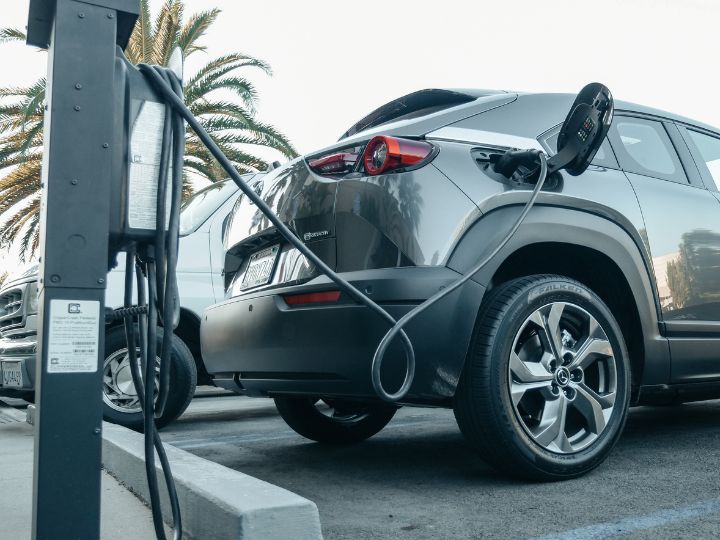Transportation is undergoing a major transformation. From self-driving cars to sustainable fuels, technology is reshaping how people and goods move across cities, countries, and continents. These advancements not only aim to make travel faster and more efficient but also safer and environmentally friendly.
In this article, we explore 10 innovations driving the future of transportation technology, highlighting trends that will redefine urban mobility, logistics, and personal travel in Australia and globally.
1. Autonomous Vehicles
Autonomous vehicles, or self-driving cars, are at the forefront of transportation innovation. Powered by AI and advanced sensors, these vehicles can navigate roads without human input, improving safety and efficiency.
Benefits include fewer traffic accidents due to human error, optimised fuel consumption and route planning, and reduced congestion in urban areas. In Australia, companies are testing autonomous trucks for long-haul deliveries, signalling a future where AI-driven transport becomes mainstream.
2. Electric Vehicles (EVs)
Electric vehicles are revolutionising personal and commercial transport. With governments pushing for reduced emissions, EV adoption has accelerated worldwide.
Key innovations in EVs include improved battery technology for longer range, fast-charging infrastructure in urban and regional areas, and reduced environmental impact compared to petrol vehicles. Australian cities are increasingly supporting EV adoption with incentives, charging stations, and infrastructure upgrades, making EVs a sustainable alternative.
3. Hyperloop and High-Speed Rail
High-speed rail and hyperloop systems promise to make intercity travel faster and more efficient. The hyperloop concept uses pods travelling through low-pressure tubes at speeds exceeding 1,000 km/h, while maglev trains reduce friction for smoother rides.
Advantages include shorter travel times between major cities, reduced reliance on short-haul flights, and lower carbon emissions than traditional transport. While Australia is still exploring these technologies, global trials indicate that high-speed rail and hyperloop systems could redefine long-distance travel in the next decade.
4. Drone Delivery Systems
Drones are increasingly used for logistics and last-mile delivery, especially in urban areas or remote regions. Companies like Amazon and UPS are experimenting with drones to deliver packages faster and more efficiently.
Applications include medical supply deliveries in rural areas, on-demand parcel delivery in cities, and reduced traffic congestion and delivery times. In Australia, regulatory frameworks are evolving to allow safe drone usage while maintaining public safety.
5. Smart Traffic Management Systems
Cities are implementing AI-driven traffic management systems to reduce congestion, improve safety, and lower emissions. These systems use real-time data from sensors and cameras to optimise traffic lights, monitor congestion, and predict traffic flows.
Benefits include shorter travel times for commuters, reduced fuel consumption, and improved emergency vehicle response times. Australian cities like Sydney and Melbourne are investing in smart traffic infrastructure as part of their push toward smart city initiatives.
6. Connected Vehicles & IoT
Connected vehicles use the Internet of Things (IoT) to communicate with infrastructure and other vehicles. This technology enhances safety and efficiency by allowing cars to share information about traffic, road conditions, and hazards.
Key benefits include early collision warnings, predictive maintenance for fleets, and enhanced driver experience and reduced downtime. Connected vehicles are set to become standard in the coming years, improving safety and convenience for Australian drivers.
7. Flying Cars and Air Mobility
Urban air mobility is no longer a distant dream. Flying cars and air taxis are being developed to reduce urban congestion and offer faster travel options.
Challenges include regulatory approval for airspace usage, safety standards and vehicle reliability, and infrastructure for landing and take-off. Companies are testing prototypes in cities worldwide, including Australia, hinting at a future where personal air transport could complement traditional road and rail systems.
8. Mobility-as-a-Service (MaaS)
MaaS integrates public transport, ride-sharing, bike rentals, and e-scooters into a single platform, providing convenient, cost-effective, and sustainable urban mobility.
Advantages include simplifying planning and ticketing, encouraging use of shared transport modes, and reducing private vehicle reliance, lowering emissions. Australian cities are piloting MaaS apps to streamline commuting and improve accessibility for residents.
9. Sustainable Fuels and Green Transportation
Reducing the carbon footprint of transportation is critical. Innovations include hydrogen fuel cells, biofuels, and synthetic fuels for vehicles that cannot easily transition to electricity.
Benefits include cleaner energy for long-haul trucking and shipping, reduced greenhouse gas emissions, and support for Australia’s climate goals. These fuels complement EV adoption and pave the way for a greener transport future.
10. AI and Big Data in Transport
AI and big data analytics are transforming logistics, fleet management, and public transit planning. Predictive algorithms help optimise routes, reduce delays, and improve safety.
Applications include smart public transit scheduling, autonomous fleet coordination, and real-time traffic prediction. Australia’s transport authorities are increasingly leveraging AI to enhance urban mobility and logistics efficiency.
Conclusion
The future of transportation technology is shaping how Australians travel, commute, and move goods. From autonomous vehicles and EVs to flying cars and smart traffic systems, these innovations promise safer, faster, and more sustainable mobility.
By embracing these technologies, we can reduce congestion, lower emissions, and create a connected transport ecosystem that meets the needs of modern cities.
FAQs
Q1: What is the most promising transportation technology for the next decade?
Autonomous vehicles, electric vehicles, and AI-driven traffic systems are expected to have the greatest impact on efficiency, safety, and sustainability.
Q2: How do autonomous vehicles improve road safety?
They reduce human errors, provide predictive collision warnings, and can communicate with other vehicles to prevent accidents.
Q3: Are flying cars realistically possible soon?
While prototypes exist, widespread adoption depends on regulatory approval, safety testing, and infrastructure development, which may take several years.
Q4: How does MaaS benefit urban commuters?
MaaS integrates multiple transport modes into one platform, making commuting easier, cost-effective, and environmentally friendly.
Q5: What role does AI play in transportation technology?
AI optimises traffic flow, predicts delays, improves fleet management, and enhances autonomous vehicle performance.
Q6: How sustainable are electric vehicles compared to traditional cars?
EVs produce zero tailpipe emissions and can use renewable energy for charging, making them significantly more sustainable than petrol or diesel vehicles.







